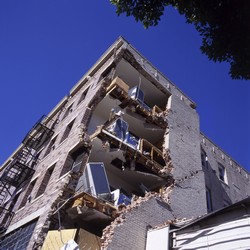Innovative numerical tools to better assess buildings' seismic risk and structural safety
Engineers expect an inelastic response of buildings to an earthquake, meaning that the buildings absorb part of the seismic energy. In most cases, it remains difficult to establish confidence levels in numerical prediction of the inelastic seismic response. The EU-funded NOUS (Probabilistic inverse models for assessing the predictive accuracy of inelastic seismic numerical analyses) project took an innovative approach based on probabilistic inverse theory to assess the modelling uncertainty associated with inelastic seismic numerical analyses. NOUS is based on the notion that the damping forces which have to be introduced in seismic inelastic time history analyses can reflect the intrinsic uncertainty in the inelastic structural model. Project partners investigated these damping forces, which are commonly computed with Rayleigh damping. An examination of Rayleigh damping shows that controlling the damping ratio that results from such damping throughout inelastic time history seismic analysis is challenging. The NOUS team proposed an analytical technique for optimal control of the damping ratios. It then used this method to perform a probabilistic sensitivity analysis to quantify the impact of uncertain damping ratios on engineering demand parameters that are relevant to performance-based design. Researchers developed a probabilistic nonlinear structural model of a reinforced concrete frame structure and tested it on a shaking table. They also carried out Monte Carlo simulations with efficient sampling procedures to propagate the initial damping uncertainty in a tractable method. To evaluate the predictive accuracy of inelastic seismic numerical analyses, the project team devised a probabilistic or Bayesian inverse approach. It also looked into reinforced concrete frame structures to address the issue of reducing model intrinsic uncertainty. NOUS tools assess the predictive accuracy of numerical models used to simulate the response of non-linear structures in regions prone to seismic activity, while improving seismic risk management methods. This will impact engineers designing or retrofitting buildings, insurance companies developing policies and crisis teams seeking to save lives during seismic events.



